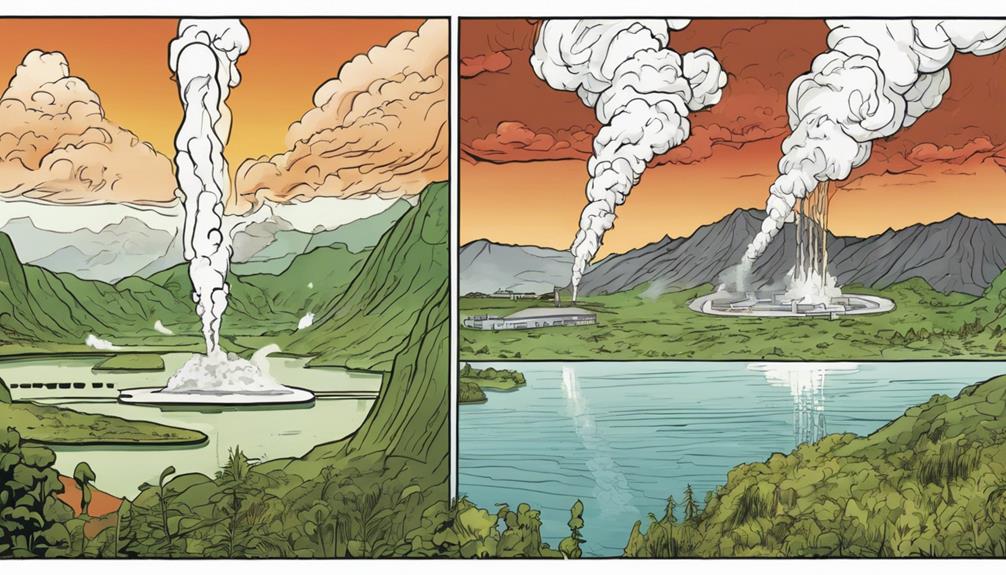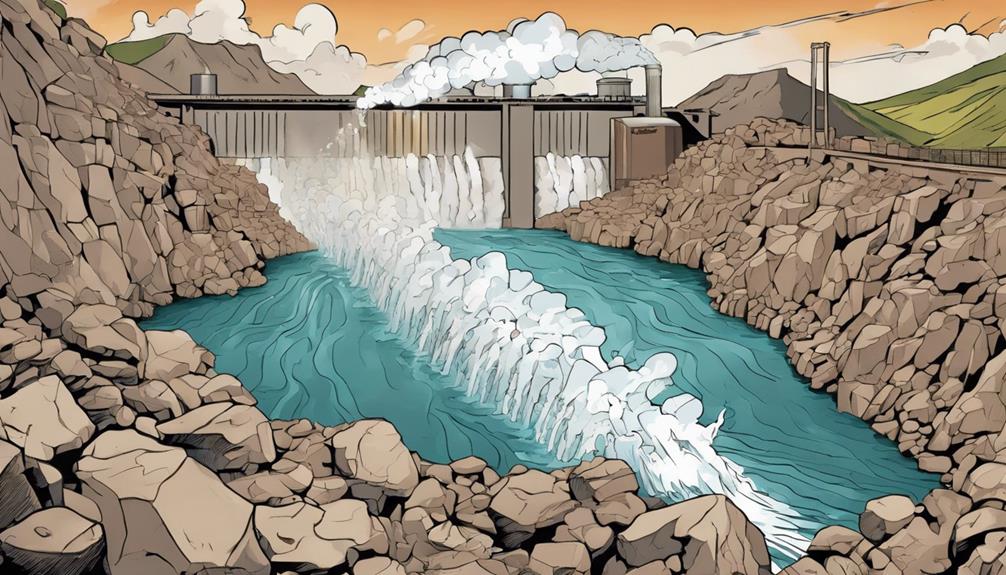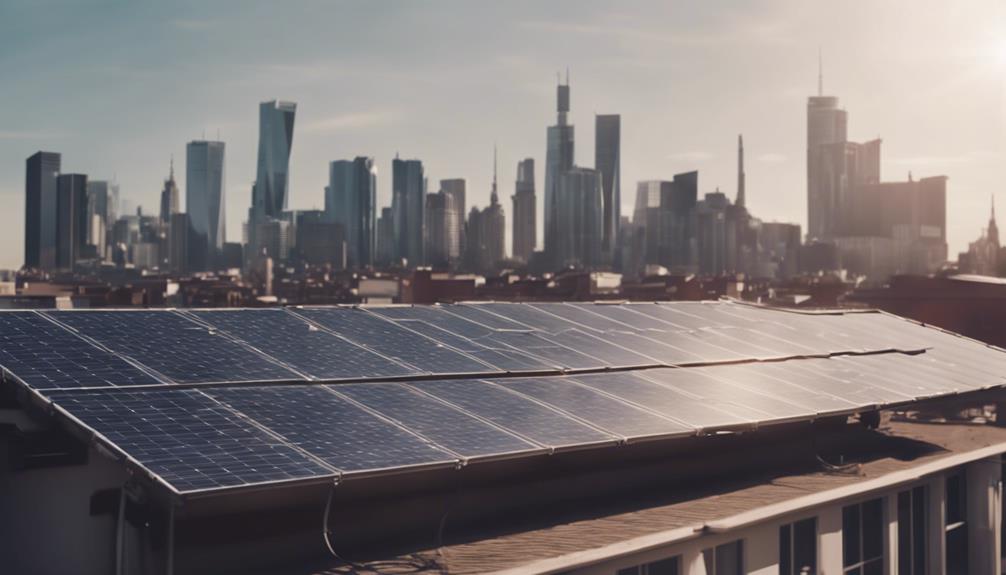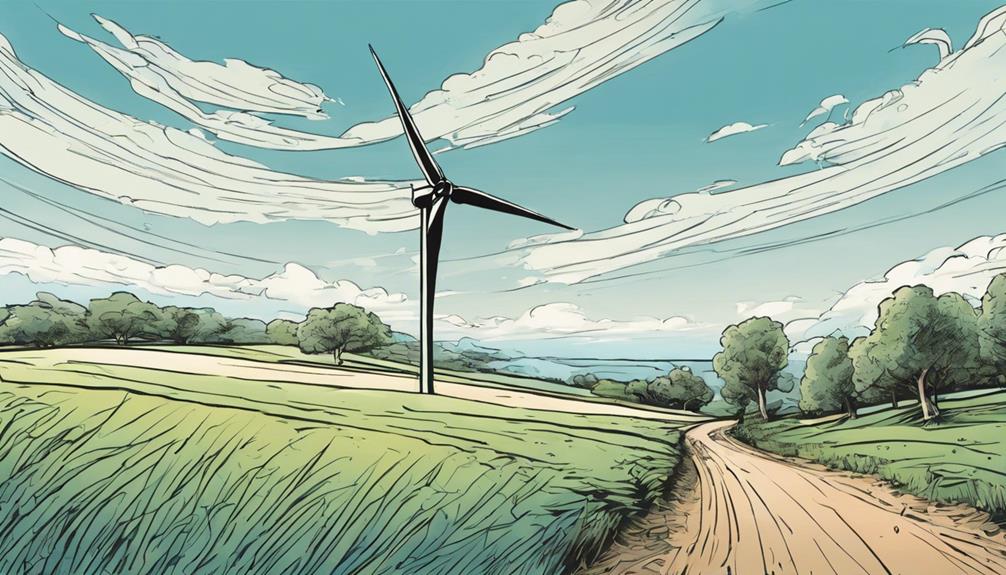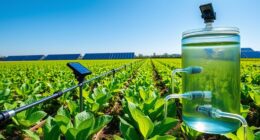For the best chance of success, consider locations near active volcanic zones where plate tectonics create ideal conditions for a geothermal energy plant. This setup provides the necessary heat sources and geological features essential for efficient energy generation. Geothermal energy thrives in areas with such natural elements, making them prime spots for plant installations.
Key Takeaways
- Active volcanic zones near tectonic plate boundaries
- Mountain belts with geothermal potential
- Areas with enhanced water circulation in Earth's crust
- Locations with granitic rocks for heat production
- Regions historically known for geothermal resources, like Colorado
Plate Tectonics and Geothermal Resources
When considering geothermal energy plant locations, focusing on plate tectonics is vital for understanding the distribution of geothermal resources. Plate tectonics play a pivotal role in the formation of geothermal hotspots. Areas near active volcanoes, which are often located along tectonic plate boundaries, tend to have high-temperature geothermal resources suitable for energy production.
Additionally, mountain belts that result from plate tectonics processes are associated with potential geothermal resources due to the geological activities that occur in these regions. Water circulation deep within the Earth, influenced by faults and topographic variations resulting from plate movements, can enhance the availability of geothermal resources.
Plate tectonic processes not only concentrate mineral resources but also indicate potential geothermal hotspots where the Earth's crust may hold significant heat suitable for energy generation. The presence of granitic rocks with higher heat production further contributes to creating warm spots within the Earth's crust, making them favorable locations for geothermal energy production.
Hot-Water Reservoir Depletion Impact
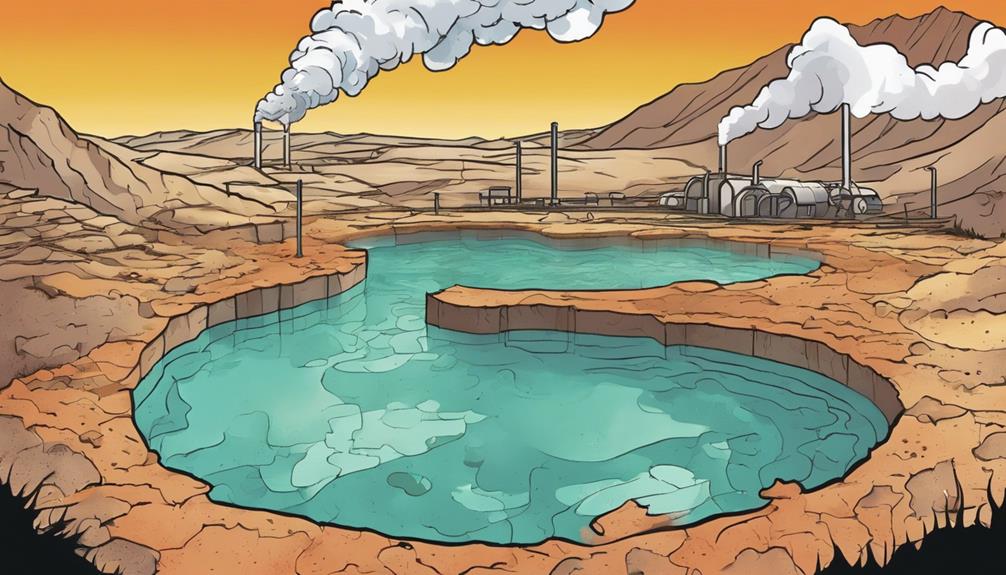
Depletion of hot-water reservoirs through geothermal energy extraction can have harmful effects on local ecosystems. Overexploitation of these reservoirs can disrupt natural habitats and decrease water availability for plant and animal species. This depletion alters the hydrology of the area, impacting the overall balance of the ecosystem.
To mitigate these negative effects, sustainable management practices are vital in geothermal energy production. Monitoring and regulating the use of hot-water reservoirs can help prevent their depletion and preserve the environment and biodiversity. By implementing sustainable practices, such as carefully managing extraction rates and implementing re-injection techniques, the impacts of hot-water reservoir depletion can be minimized.
It's important to prioritize the long-term health of these ecosystems through responsible management practices to secure the sustainable use of geothermal resources without compromising the environment.
Urbanization and Agriculture Effects

Urban expansion poses a challenge to maintaining sustainable agricultural practices and food security. As urbanization continues to encroach upon agricultural lands, the availability of space for food production diminishes. This trend not only impacts the livelihoods of farmers but also threatens food security in densely populated areas.
The increasing demand for urban infrastructure often results in the conversion of fertile farmlands into residential or commercial zones, disrupting traditional agricultural practices.
In the context of geothermal energy plants, urbanization can further complicate their implementation. The competition for land between urban development and agricultural activities may limit the suitable locations for geothermal energy projects. Additionally, the infrastructural demands of urban areas may strain available resources needed for geothermal energy extraction.
To address these challenges, it's essential to strike a balance between urban growth and agricultural needs. Smart land use planning and effective resource management are essential to ensure sustainable food production while also exploring alternative energy sources like geothermal in urbanized regions.
Earth's Climate Change Impacts

The impacts of Earth's climate change are far-reaching and profound, affecting ecosystems and weather patterns globally. Climate change impacts, such as rising global temperatures, melting ice caps, and more frequent extreme weather events, have significant implications for the environment. Ecosystems are being disrupted, leading to challenges for plants, animals, and habitats worldwide. Human activities like burning fossil fuels and deforestation are major contributors to climate change, exacerbating these effects.
Considering the challenges posed by climate change impacts, the importance of sustainable energy sources like geothermal energy plants becomes evident. Geothermal energy, which harnesses heat from beneath the Earth's surface, offers a renewable and low-emission alternative to traditional fossil fuels. By utilizing geothermal energy, we can reduce greenhouse gas emissions and help mitigate the effects of climate change.
This underscores the significance of identifying suitable locations for geothermal energy plants to promote sustainable practices and combat climate change effectively.
Mining Environmental Implications
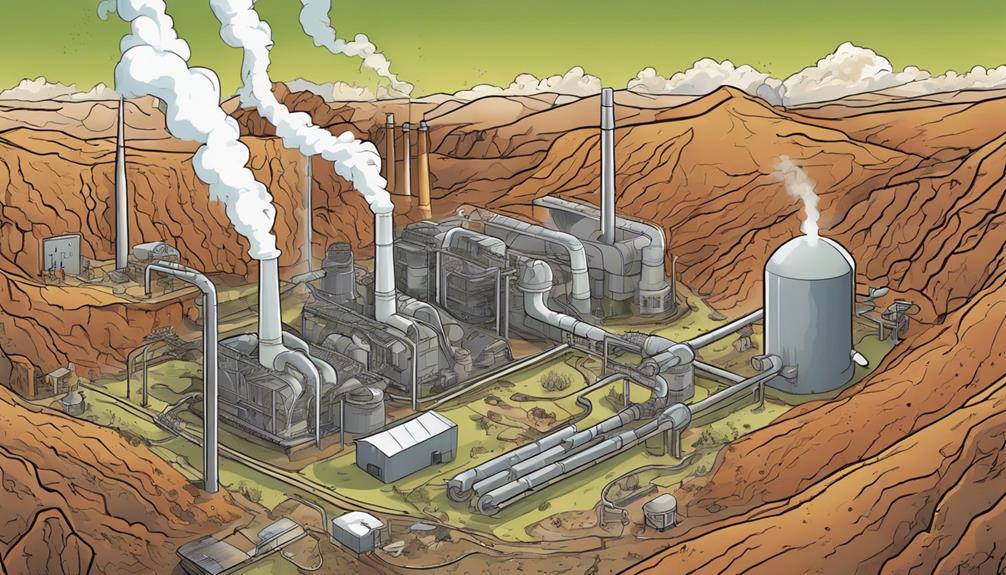
You should consider the significant environmental impacts of mining activities, including soil erosion, water pollution, and habitat destruction.
Open-pit mining can lead to deforestation, loss of biodiversity, and altered landscapes in the surrounding areas.
It's vital to implement sustainable mining practices and proper mitigation strategies to minimize ecological harm and protect local ecosystems.
Environmental Impact Assessment
Mining activities linked with geothermal energy plants can have significant environmental implications, including land degradation, water contamination, and air pollution. When conducting an environmental impact assessment for geothermal electricity projects, it's important to contemplate the potential effects of mining operations.
The surface disruption caused by mining can lead to habitat loss and ecosystem disturbances, impacting local wildlife. Additionally, the leaching of harmful metals from mining waste can contaminate soil and water sources, posing risks to both the environment and human health.
To address these concerns, reclamation efforts are essential to restore mined areas to a sustainable state post-extraction. Proper waste management practices and continuous monitoring are crucial to minimize the environmental impacts of mining activities associated with geothermal energy production.
Sustainable Mining Practices
Implementing sustainable mining practices involves minimizing environmental harm and promoting responsible resource extraction. Sustainable mining practices play a vital role in reducing air, water, and soil pollution, as well as minimizing habitat destruction. By adopting these techniques, companies can help preserve ecosystems, protect biodiversity, and meet environmental regulations and community expectations. It is essential for mining operations to prioritize worker safety, community engagement, and long-term resource availability.
| Benefits of Sustainable Mining Practices |
|---|
| Reduces environmental harm |
| Promotes responsible resource extraction |
| Preserves ecosystems and biodiversity |
Ecological Harm Mitigation
To mitigate ecological harm caused by mining activities, sustainable practices focus on minimizing environmental impacts and safeguarding biodiversity.
When considering the establishment of a geothermal energy plant, it's essential to address the potential ecological harm that may arise from the associated mining activities. Mining for geothermal energy sources can lead to surface disruption, habitat loss, and soil erosion, impacting local ecosystems. Moreover, precipitation can leach toxic metals from mining waste into water bodies, posing a threat to aquatic life.
Sustainable mining practices play an important role in reducing these impacts by implementing measures to protect the environment and preserve biodiversity. Understanding the unique challenges posed by underground mining versus open-pit mining is necessary in developing strategies to mitigate ecological harm effectively.
Geothermal Energy Formation Sources

Geothermal energy is primarily sourced from heat generated by radioactivity and primordial heat within the Earth's core. The Earth's interior constantly emits heat, with a significant portion originating from the radioactive decay of elements like uranium and thorium. This heat production, combined with the primordial heat trapped since the Earth's formation, results in a renewable and sustainable energy source known as geothermal energy.
High-temperature geothermal resources are commonly located near active volcanic zones due to the movement of tectonic plates. Water circulation deep within the Earth, influenced by topographic variances and fault lines, plays an essential role in the creation of geothermal energy sources. Additionally, granitic rocks with elevated heat production capabilities can form warm spots in the Earth's crust, making them ideal locations for potential geothermal energy plants.
Understanding these geothermal energy formation sources is vital for identifying suitable areas for harnessing this abundant and eco-friendly energy resource.
Colorado Geothermal Exploration Targets
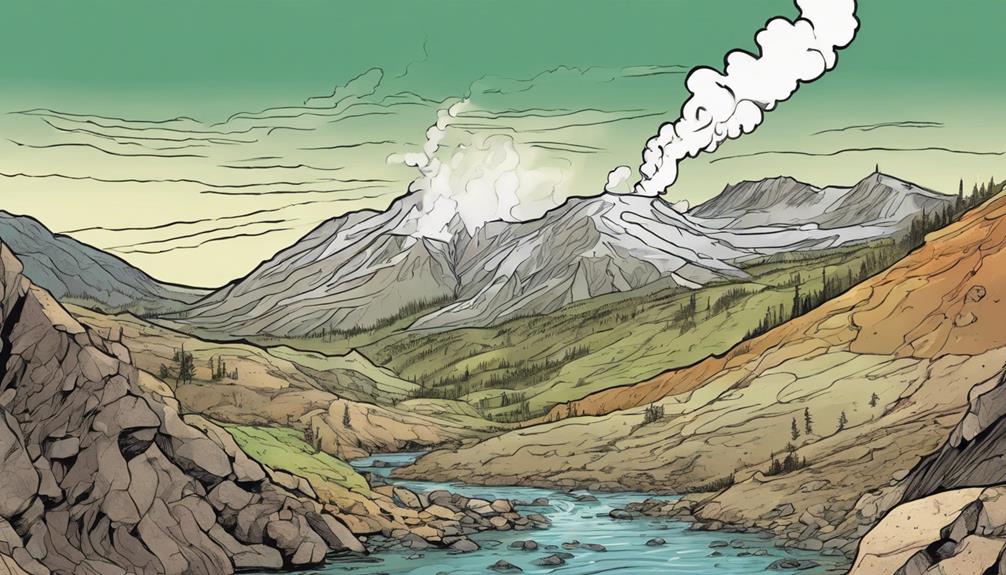
Exploring geothermal energy potential in Colorado focuses on prime targets like Rico Dome, Mount Princeton Hot Springs, and San Luis Valley, given the historical presence of suitable resources for direct-use applications in the state.
Colorado has a rich history of geothermal resources, making it an attractive location for companies looking to harness geothermal energy for various applications. While there are currently no geothermal electrical power generating facilities in Colorado, companies are actively exploring the potential for geothermal electricity generation in different parts of the state.
The state's potential for generating electrical power from geothermal energy is being reevaluated, with a focus on areas like Rico Dome, Mount Princeton Hot Springs, and San Luis Valley. These locations offer promising opportunities for geothermal exploration and development, indicating a growing interest in utilizing Colorado's geothermal resources for sustainable energy production.
Colorado Geological Survey Publications
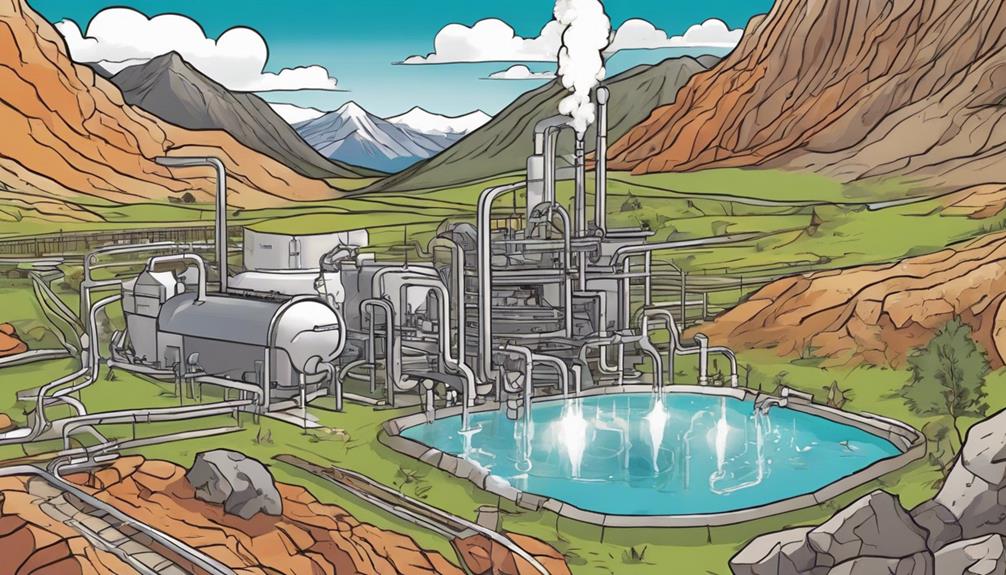
You can explore valuable insights into Colorado's geothermal resources through Colorado Geological Survey Publications. These reports offer detailed information on geothermal resource distribution, the state's geothermal potential, and specific exploration targets in Colorado.
Geothermal Resource Distribution
Amidst the various geological factors influencing geothermal resource distribution, topographic variations and faults play a pivotal role in facilitating the circulation of water deep within the Earth for potential energy extraction. Mountain belts formed by plate tectonics are often associated with the presence of geothermal resources, while granitic rocks with high heat production can create ideal locations for geothermal energy plants by forming warm spots in the Earth's crust. Active volcanoes are also prime locations due to their high-temperature geothermal resources. This combination of factors makes certain areas more suitable for harnessing geothermal energy than others.
| Geological Factors | Impact on Geothermal Resources |
|---|---|
| Topographic Variations | Facilitates water circulation for energy extraction |
| Faults | Assist in directing water to heat sources |
| Plate Tectonics | Associated with mountain belts and geothermal resources |
| Granitic Rocks | Create warm spots ideal for geothermal energy plants |
| Active Volcanoes | High-temperature geothermal resources |
Understanding these geological factors is essential in identifying locations where geothermal energy plants would be most successful.
Colorado's Geothermal Potential
In light of the Colorado Geological Survey Publications, Colorado's geothermal potential has garnered renewed interest for electrical power generation. The state's historical suitability for direct-use applications hints at a promising geothermal electricity generation future.
With areas like Rico Dome, Mount Princeton Hot Springs, and San Luis Valley identified as prime exploration targets due to their geothermal activity, companies are actively pursuing geothermal projects in Colorado.
The reevaluation of Colorado's geothermal resources underscores a growing industry presence and a shift towards utilizing geothermal energy for electricity generation. The Colorado Geological Survey's valuable reports offer essential insights into the state's geothermal potential, guiding further exploration and development efforts.
As interest in renewable energy sources rises, Colorado stands out as a state with significant geothermal potential that could contribute substantially to the diversification of its energy portfolio through geothermal electricity generation.
Exploration Targets in Colorado
Colorado Geological Survey Publications highlight key exploration targets within the state for geothermal energy projects, including notable areas like Rico Dome, Mount Princeton Hot Springs, and San Luis Valley. These locations offer significant potential for geothermal energy generation in Colorado. Companies are actively engaged in exploring these areas to harness the state's geothermal resources for electricity production. The reevaluation of Colorado's geothermal power generation capacity underscores the importance of these exploration targets.
| Exploration Targets | Location | Potential |
|---|---|---|
| Rico Dome | Southwestern CO | High potential for geothermal energy extraction |
| Mount Princeton Hot Springs | Central CO | Geothermal resource suitable for electricity generation |
| San Luis Valley | Southern CO | Promising area for geothermal energy exploration |
The reports from the Colorado Geological Survey emphasize the need for further investigation into these key sites to fully leverage Colorado's geothermal energy potential. By focusing on these exploration targets, Colorado can position itself as a significant player in the geothermal energy sector.
Frequently Asked Questions
What Location Would Be Best for Geothermal Energy?
You'd hit the jackpot for geothermal energy in places with volcanic vibes or bubbling hot spots. Areas flaunting geysers, fractures, and fiery depths are your go-to spots. Proximity to intense heat sources? Game-changer!
Where Might Geothermal Energy Be the Most Useful Effective?
In regions with high heat flow, like geothermal hotspots or active volcanic areas, geothermal energy can be incredibly useful and effective. Utilize the Earth's natural heat sources for efficient electricity generation at these locations.
Which Location Would Be the Best Choice for a Geothermal Energy Generating Plant?
For the best spot to set up a geothermal plant, head to active tectonic plate boundaries with volcanoes. The Earth's warm spots in granitic rocks near mountain belts and faults are perfect for harnessing geothermal energy efficiently.
What Place Has the Most Geothermal Energy?
You'll find the most geothermal energy in regions near active tectonic plate boundaries, like the Ring of Fire and the East African Rift. These areas boast abundant geothermal resources and high underground heat levels for successful energy production.
What are the Best Locations for Geothermal Energy Plants in California?
California geothermal energy sites offer ideal locations for geothermal energy plants due to the state’s abundant geothermal resources. The best locations are found in the northern part of the state, particularly in the Cascades and the Sierra Nevada mountain ranges. These areas have high temperatures and permeable rock formations, making them perfect for harnessing geothermal energy.
Conclusion
To summarize, the best location for a geothermal energy plant would be in areas with high geothermal resources, such as regions with active plate tectonics.
While urbanization and agriculture may impact these areas, the benefits of clean and renewable energy outweigh the challenges.
By tapping into the Earth's natural heat sources, we can combat climate change and create a sustainable energy future.
Consider the possibilities of harnessing geothermal energy in Colorado and beyond.
